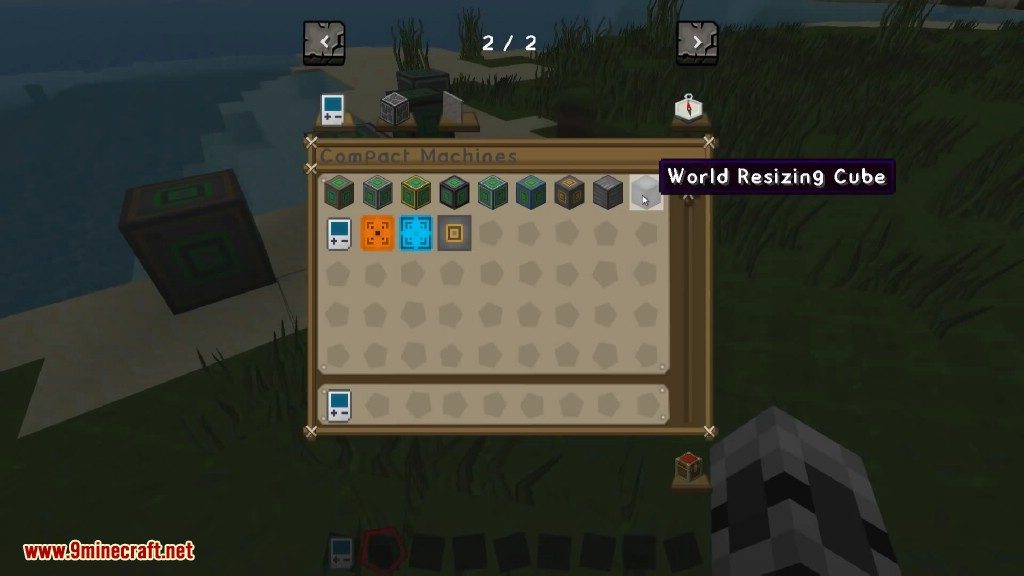Setting up Entangler on your Mac
In order to control your Mac, the Entangler app must be installed and running on your Mac. If you haven't installed it already, it is available from the Mac App Store. On first launch, Entangler for your Mac will walk you through some initial set up. After the set up is complete, Entangler is available in your menu bar:
Mtg Entangler
- The Entangler is Marge's Superhero Alter Ego when she was affected by a nuclear explosion. She is one of the superheroes that battled Bartman. She can control her hair. Her belt is the same as her string of pearls. Comic book – When Bongos Collide!
- Ohmic Quantum Entangler is a Alien Multi-tool in the No Man's Sky universe.
- The Quantum Entangler is a gear made by ROBLOX on February 17, 2012. This gear will clone the user for a good amount of time. The user can switch to either one at any time except if either the user has no health, or the other clone disappeared.
New Zero-Point Mass Entangler Tuesday, October 9, 2018 The October release will see the introduction of this new module that can be fitted to Heavy Interdictors as part of efforts to balance the use of heavy interdictors with oversized propulsion modules. Entangle definition is - to wrap or twist together: interweave. How to use entangle in a sentence.


Clicking the Entangler icon will pop open a window, which is probably empty at this point. The window lists all of the Entangler Actions you have installed. An Entangler Action can be any file which OS X is able to run out of your Application Scripts folder, currently Automator Workflows, Applescripts, and Unix shell scripts. There are a few ways to install new Entangler Actions:

- If you have an Entangler Action Archive (an .entangler file), such as one downloaded from the Action Gallery, you can simply double click on the file and Entangler will open it.
- Clicking on the + button at the bottom left of the Entangler window will open a file browser which will allow you to select any supported file, including Automator Workflows, Applescripts, Unix shell scripts, and Entangler Action Archives. Select one or more actions you wish to install and click Open.
- You can also just drop the action into the
~/Library/Application Scripts/com.amolloy.ottosantenna/
folder. Entangler will notice and add the action.
A few moments after an action has been added to Entangler on your Mac, it should show up in Entangler on your iOS devices. If you declined to allow push notifications on your iOS device, you will need to manually refresh the list of actions by pulling down until the refresh icon appears and starts spinning. Once it does show up, go ahead and tap it to give it a try. You should see the action executed on your Mac a few moments later. How long it takes depends on a number of factors. If your iOS device and Mac are both connected to the same local network, it may be instantaneous. If they aren't, then it could take several seconds. Either way, Entangler will display a notification on your Mac once the action has been completed.
Entangled Urban Dictionary
Arguments
If you have an action that you would like to pass arguments to, you can press and hold on the action for a few seconds in Entangler on your iOS device. A dialog will appear asking you to supply arguments. Entangler's argument parsing is not as sophisticated as a typical Unix shell, but it does know how to do things like group quoted strings as a single argument.

Clicking the Entangler icon will pop open a window, which is probably empty at this point. The window lists all of the Entangler Actions you have installed. An Entangler Action can be any file which OS X is able to run out of your Application Scripts folder, currently Automator Workflows, Applescripts, and Unix shell scripts. There are a few ways to install new Entangler Actions:
- If you have an Entangler Action Archive (an .entangler file), such as one downloaded from the Action Gallery, you can simply double click on the file and Entangler will open it.
- Clicking on the + button at the bottom left of the Entangler window will open a file browser which will allow you to select any supported file, including Automator Workflows, Applescripts, Unix shell scripts, and Entangler Action Archives. Select one or more actions you wish to install and click Open.
- You can also just drop the action into the
~/Library/Application Scripts/com.amolloy.ottosantenna/
folder. Entangler will notice and add the action.
A few moments after an action has been added to Entangler on your Mac, it should show up in Entangler on your iOS devices. If you declined to allow push notifications on your iOS device, you will need to manually refresh the list of actions by pulling down until the refresh icon appears and starts spinning. Once it does show up, go ahead and tap it to give it a try. You should see the action executed on your Mac a few moments later. How long it takes depends on a number of factors. If your iOS device and Mac are both connected to the same local network, it may be instantaneous. If they aren't, then it could take several seconds. Either way, Entangler will display a notification on your Mac once the action has been completed.
Entangled Urban Dictionary
Arguments
If you have an action that you would like to pass arguments to, you can press and hold on the action for a few seconds in Entangler on your iOS device. A dialog will appear asking you to supply arguments. Entangler's argument parsing is not as sophisticated as a typical Unix shell, but it does know how to do things like group quoted strings as a single argument.
While editing the arguments, you will also see a row of buttons above the keyboard. These are shortcuts which can be inserted into your arguments. Shortcuts whose name ends in an ellipsis (…) have variations that you can choose from by pressing and holding on the button. A popup will appear with the variations. Just like with special characters on the keyboard, drag your finger to the variation you wish to use before lifting your finger off the screen. Candelabra.
The currently available shortcuts are:
| Shortcut | Description |
|---|---|
| Device Name | The name of the iOS device used to trigger the action. For example, 'Andy's iPhone'. |
| Date | The current date. By default, it will format the date using the ISO 8601 combined date and time standard (20150924T08:13:11Z). Other options include Full Date (November 23, 1937), Medium Date (Nov 23, 1937), and Short Date (11/23/37). These are locale-aware and will use the date format your iOS device is configured to use. |
| Time | The current time. Options include Full Time (3:30:42 PM Pacific Standard Time), Medium Time (3:30:32 PM), and Short Time (3:30 PM). These are locale-aware and will use the date format your iOS device is configured to use. Short Time is the default. |
It's been more than a year since Covid 19 landed on our shores and disrupted our lives. Following public health guidelines, we decamped last April and have since carried on remotely. Our research labs returned to service on a limited basis in early summer. Only a few upper-year undergraduate laboratories have convened in person. Our faculty and staff have done a remarkable job teaching and researching remotely. Nevertheless, we will continue to operate following public health guidelines until the pandemic has calmed and we return to a new normal. Through all of this, reaching out to you, our alumni, students, and friends remains for us a priority. Our Entangler editorial staff worked diligently to get this volume to you as quickly as possible. Nevertheless, the added strain from pivoting to on-line teaching prevented us from getting this volume to you sooner. I hope you will find it worth the wait.
With this backdrop, welcome to the March 2021 volume of The Entangler. Please read about our rising stars of Physics & Astronomy, individuals of exceptional promise and talent who are making the world a better place. We report on the success of the inaugural Schrodinger's Hack, the first hackathon hosted exculsively by students in the Department of physics & Astronomy. I was thrilled to be asked to serve as a judge, and I was inspired by how much was accomplished in only a few days of remote hacking. The department has a strong history at this sort of thing. Physics & Astronomy alum Kartik Talwar cofounded Hack the North, one of the largest hackathons in North America. All this while working on his physics degree. You may recall reading about his successful adventures in the April 2019 Entangler. I am particularly pleased to read about another successful Physics & Astronomy graduate, Farnoud Kazemzadeh. Farnoud received his BSc in 2008 and went on to receive a PhD in Engineering. His thesis research combined with his Waterloo academic genes drove him to found two successful startups. Farnoud was my first undergraduate research student after arriving Waterloo. We published a paper together describing how massive black holes power the nuclei of galaxies. The thrill and inspiration I felt as I read about Farnoud in this issue of The Entangler is hard to describe. Farnoud, like many others, is an outstanding example of how a Physics degree lays the foundation for success in almost any endeavor. This and so much more to read about in this volume of The Entangler. Enjoy!

